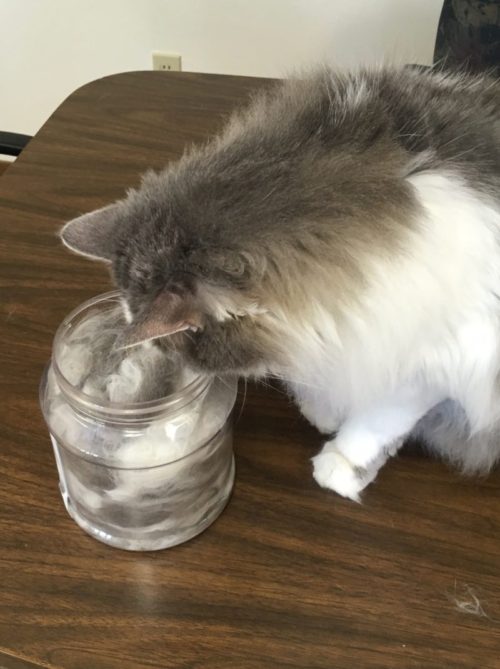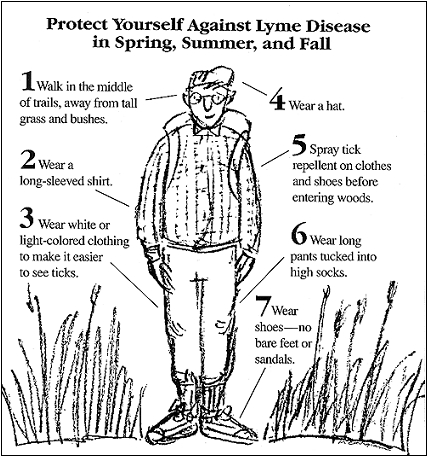What to Do About Hacking Cats!
It appears I have neglected our furry feline friends as I review the different topics discussed over the last year. Therefore, today I feel compelled to discuss the ever-present concern about cats and hacking — why they do this and what are the causes are. This topic comes up often in conversations with clients about their cats. It is never a fun one to discuss, since it can have some very undesirable side effects. The causes can vary, but a large percentage are related to excessive hair consumption associated with normal grooming behaviors.
A cat’s ability to groom themselves is an important trait to have. We are all amazed that they can get into something sticky and/or messy and after a few hours return to find everything cleaned up. Also being able to groom under their tail is an important attribute to have. If your cat cannot clean under their tail or over the top of their back, it can indicate they are overweight or having arthritis, making it painful to reach those areas. We also see cases where a kitten that was orphaned at an early age will not be the meticulous groomer that we would like. The grooming behaviors are learned from their mother at an early age, and if she is not present those kittens may never be good at self grooming.
If your cat is hacking there are important things to consider. We have a number of upper respiratory conditions that can cause drainage in the back of the throat which can lead to a hacking sound. We have foreign body ingestion that can have a similar sound, but usually the continual attempt to dislodge the foreign body gives clues indicating the need to seek veterinary care. We can have asthma-like symptoms that may have a hacking sound associated with environmental items such as smoke, dust, pollens, certain aerosol sprays, etc. The challenge is always to determine what the causes are and then work to treat or prevent them in the future. Most cats, if hacking is associated with hairballs, will eventually get the large, ugly, slimy, moist, tubular hairball vomited up. They may make one giant attempt to remove it or multiple attempts with small bile partially hair filled vomitus.
WHY do these hairballs occur? From my experience it appears that younger cats have more natural ability to keep the hair moving and not vomit up hairballs. Now, that also could be related to the increase in shedding as the cat ages, since we seem to be less likely to spend hours brushing and removing all the excess hair. We have cats that groom not only themselves but other cats in the household, thereby increasing the amount of hair they take in daily. Bathing cats can help remove unwanted hair as well as doing a “Lion Cut” on long haired cats to help prevent matts.
We know that diet can affect the hair coat and increase or decrease the amount of shedding. If you are interested in finding a diet that helps decrease the amount of shedding, speak with your veterinarian. Many diets are not nutritionally complete and therefore skin and hair conditions are affected. When changing a diet it will take at least 6 months to notice a difference in the hair coat and shedding. Diets that indicate “hairball formula” often times will have an increase in fiber and/or omega 3 & 6 nutrients. These ingredients can have a beneficial affect on moving the hair through the intestinal tract and preventing hairballs. The debate on whether canned or dry diets are better for cats continues, with many feeling a combination of the two is best not only for hairballs but the increase in moisture content as well.
WHAT should you do when your cat vomits a hairball? First, many homes are multi-cat households so you must determine who. This can be difficult, so sometimes it involves separation and evaluating eating habits and stool habits to determine who may be responsible. If that is not possible, it will not hurt a cat to be treated for hairballs if you decide to treat everyone. Often times cats having issues with hair will also have abnormal stools. The stools will be more round and small in size. They should be more like a “tootsie roll” if they have a healthy digestive tract. I realize it is not fun to evaluate stool, but one can learn a lot from what that stool looks like. Once you have determined who is responsible, take a good look at the cat’s hair coat. Are there matts, rough and unkept areas of body, shiny or dull coat, and excessive amounts of hair removed with petting, bathing, and/or brushing? If you see a number of these conditions it would be wise to speak with your veterinarian about the skin and hair coat. It is an important organ just like the liver or kidneys and needs special attention as well. If the coat and skin appear to be healthy, then you need to consider ways to prevent hairballs.
Hairball prevention is best treated with diets that are complete and well balanced as mentioned earlier. You may pay more for these diets, but it will save you money in the prevention of hairballs as well as other health concerns that develop over the lifetime of your cat related to poor quality nutrition. There are a number of lubricants that can be used to treat hairballs. The use of these products will help keep the hair moving in the digestive tract and avoid the “hacking up” of a hairball. The recommendation is to use daily for 3-5 days after a hairball has been presented and then use daily, every other day, biweek, or weekly as needed to keep them from developing. There is no exact science in these preparations. Many factors affect how often you should use them. For instance if someone bathes and combs their cat regularly, they will have less need to use the lubricants for hairballs. If the cat grooms themselves and other cats in the home then they may need it daily. The goal is to use these products as often as necessary to prevent hairballs.
I have often suggested adding canned food into a cats diet if hairballs are a concern. The additional moisture and oils helps lubricate the intestinal tract and keep the hair moving. Since elderly cats are more prone to hairballs, the additional calories daily can help weight loss issues and dental concerns as well. Some cats will refuse canned food since they are very cautious when something new is presented to them. It is important to warm the canned food if they do not like canned food after it has been refrigerated. Purchase the proper sized can to avoid refrigeration after 4 days or more. Many canned diets become stale and undesirable to the cat when open for extended periods. If you find your cat refuses the canned food initially, you can cut back on the volume of dry offered each day to encourage them to eat the new diet. Mix a small amount with some of their dry kibble but make certain to discard any uneaten food since it will not keep until the next meal. Introduction of canned food at a young age can make it easier to offer canned food later in life.
Start early in life with combing and bathing your cat. A kitten can learn to tolerate baths and combing much easier than teaching an older cat to appreciate these events. The following video is Hemmingway, our Winterset Veterinary Center cat, who was brushed early on in his life since we knew he would be a long haired cat. As you will see by the video, he loves his grooming time and purrs during the entire session. It is so much easier to groom a cat that is content than one that is agitated or angry. Make certain you purchase a COMB if you own a long haired cat. Brushes have a tendency to brush the top of the cat but not remove the thick under coat that needs to be removed. The fuminator and zoom groom are two products that can be helpful in removing excess hair from cats.
Click to see video: Hemmingway at Winterset Veterinary Center
A professional groomer is trained to shave cats that have continual issues with hairballs or owners that want to reduce the household hair issues. We call it a “Lion Cut”. They have a very short body and a mane around the face and a tuft on the tail. Some of these cats are groomed like this twice per year and others are done annually depending on the owner. Often times the cats are sedated for this special cut to avoid cutting their extremely thin skin and preventing injury to the groomer.
Hacking cats can mean different things at different times. Always be aware of their eating and drinking habits since that can also give you insight to what may be causing the problem. The more information you can share with your veterinarian about your cat, the more they will be able to do to solve your “hacking” issue. Have a wonderful July 4th.


